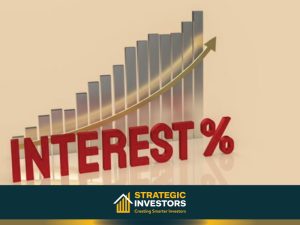
What drives the property market? The property market is an important and complex sector in any developed country. Not only can the property market influence what is happening in the economy, but the property market can also influence the economy. It sometimes can be hard to understand what’s happening to property values when some areas have price rises and others are falling. But despite such differences, there are some significant factors or drivers that have a fundamental impact on the property market. Every property investor needs to be aware of to maximise the return on their property.
Economy Strength
The first amongst these is the overall state of the economy. When things are going well, people have jobs, money and confidence in the future. With these things in place, they are more likely to take on significant financial commitments. When things are not going so well, people worry about losing their job. The cost of living rises, and they feel less confident about the future. During these times, people hold back from major financial decisions such as buying a house.
Interest Rates
 One of the major economic influences on whether people are able to afford to buy a home is what they have to pay to finance it. Most people aren’t in a position to buy a house outright with cash. They have to take out a home loan or mortgage. This means a bank or other lender loans them the money they usually pay back over 25 to 30 years. The cost of doing this is subliminally governed by the bank’s interest rate, which the Reserve Bank essentially decides.
One of the major economic influences on whether people are able to afford to buy a home is what they have to pay to finance it. Most people aren’t in a position to buy a house outright with cash. They have to take out a home loan or mortgage. This means a bank or other lender loans them the money they usually pay back over 25 to 30 years. The cost of doing this is subliminally governed by the bank’s interest rate, which the Reserve Bank essentially decides.
When interest rates rise, the cost of borrowing goes up, and when it goes up, people have to pay more each month for their mortgage or loan repayments. If interest rates quickly increase, it becomes more challenging to continue repayments, and property may be sold. So, there are many properties on the market simultaneously, and many people are putting off buying. With more houses on the market and fewer people wanting to buy them, prices fall.
Does Population Growth Impact Property Prices?
 Another critical factor in the property market is the size and makeup of the population at any one time. As a general rule, if the population is rising, more and more people will want houses, which pushes prices up. However, things aren’t quite that simple as you also have to consider the age of the population.
Another critical factor in the property market is the size and makeup of the population at any one time. As a general rule, if the population is rising, more and more people will want houses, which pushes prices up. However, things aren’t quite that simple as you also have to consider the age of the population.
If a high proportion of the population is under 18, they’ll still live with their parents and are not ready to buy or rent a house. But in 10, 15 or 20 years, many of these youths will be looking for somewhere of their own to live. This will create a bump in demand and push up house prices if the significant property hasn’t been built to meet demand.
And while these demographic changes have an overall impact on the number of properties required, they also have a significant impact on the type of property needed. For example, the so-called Generation Y, those who were born between the late 1970s and the early 2000s, were once happy to rent in the inner city suburbs and are now looking to buy there instead causing a switch in demand from rental properties to owner-occupier.
For instance, Generation Y’s first property will most likely be near the centre of town, close to work and social life and where there is transport available, but it must be something they can afford. This means high demand for small affordable units and apartments or perhaps even large houses that they can share with others. But as most of them won’t want to commit to buying property just yet and will prefer to rent city centre rental prices will go up.
Does Age Impact Property Prices?
 When they get older, they’ll marry and have children, and then they’ll want a bigger home with space outside for the children to play. They’ll also be able to afford something bigger and better in a nice area, the kind of property that’s likely to be in the suburbs of cities or towns. As they move into larger houses with gardens, the demand for the small apartments and units they once lived in will fall as they retire. Their children have left home once the young generation will no longer need to live in a large house. They may choose to downsize, move out of town altogether, or perhaps to the coast, where they can relax and enjoy a better quality of life. So, while demand for such places will rise, demand for large suburban houses will fall.
When they get older, they’ll marry and have children, and then they’ll want a bigger home with space outside for the children to play. They’ll also be able to afford something bigger and better in a nice area, the kind of property that’s likely to be in the suburbs of cities or towns. As they move into larger houses with gardens, the demand for the small apartments and units they once lived in will fall as they retire. Their children have left home once the young generation will no longer need to live in a large house. They may choose to downsize, move out of town altogether, or perhaps to the coast, where they can relax and enjoy a better quality of life. So, while demand for such places will rise, demand for large suburban houses will fall.
Finally, in the latest stages of their life are now long gone youngsters move back close to the city to be near amenities such as public transport, shopping and healthcare, which they may increasingly require. They buy retirement homes, small single-storey houses with no stairs to negotiate and minimum upkeep. Demand for these rises, and that of the coastal properties falls.
Of course, at a detail level, the picture is far more complex than this, but it gives you an idea of how population waves can impact property prices as first one type of property is in demand and then another.
What about Immigration and Property Prices?
 Three such population waves have been identified since the end of World War Two. First came the baby boomers born after World War Two. Typically aged in their early 30s to 50s, Generation X often have homes near city centres, close to their jobs, entertainment, a good transport links. They’re increasingly looking for larger houses in the outer suburbs, maybe 5 to 15 kilometres from the centre of town. And now, typically over 60, research shows they tend to stay on in the family home, but in time they’ll likely be looking for smaller homes either in the same area or in a rural or coastal location.
Three such population waves have been identified since the end of World War Two. First came the baby boomers born after World War Two. Typically aged in their early 30s to 50s, Generation X often have homes near city centres, close to their jobs, entertainment, a good transport links. They’re increasingly looking for larger houses in the outer suburbs, maybe 5 to 15 kilometres from the centre of town. And now, typically over 60, research shows they tend to stay on in the family home, but in time they’ll likely be looking for smaller homes either in the same area or in a rural or coastal location.
Does Population Age Distribution Matter?
 Gen Y is typically under 30. They’re currently renting in the inner city suburbs. Research shows Gen Y increasingly want to buy in the inner suburbs and trendy urban locations. Obviously, some factors have a more immediate impact than others. Interest rate changes, for instance, can have a very swift effect on the property market.
Gen Y is typically under 30. They’re currently renting in the inner city suburbs. Research shows Gen Y increasingly want to buy in the inner suburbs and trendy urban locations. Obviously, some factors have a more immediate impact than others. Interest rate changes, for instance, can have a very swift effect on the property market.
What about Demographics
 Others, such as demographics, are long term and can be predicted more easily with the proper research. But other drivers only work at a local level affecting property within a radius of just a few kilometres or even one street to the next. Sometimes local factors can be strong enough to overpower the major national drivers creating price differences. Unless you have an underlying knowledge of the property market in the area, don’t make sense. Such mini drivers can include changes to an area’s infrastructure, such as building a new road, which might make some areas more accessible but ruin other areas it cuts through.
Others, such as demographics, are long term and can be predicted more easily with the proper research. But other drivers only work at a local level affecting property within a radius of just a few kilometres or even one street to the next. Sometimes local factors can be strong enough to overpower the major national drivers creating price differences. Unless you have an underlying knowledge of the property market in the area, don’t make sense. Such mini drivers can include changes to an area’s infrastructure, such as building a new road, which might make some areas more accessible but ruin other areas it cuts through.
The presence of a good school can make an area particularly attractive to families. These localised influences mean anyone serious about investing in the property needs to research before committing to a purchase.
Wrapping Up
 So many different factors influence property prices. We have discussed a few in this article, but there are many more. This includes zoning, share markets, suburb facilities, aesthetics, natural disasters, to name a few. No one can reliably totally understand or predict 100% what is going to happen in different areas or times. Those in the industry do have knowledge and methodologies to rule out most things that don’t work based on historical data and experience.
So many different factors influence property prices. We have discussed a few in this article, but there are many more. This includes zoning, share markets, suburb facilities, aesthetics, natural disasters, to name a few. No one can reliably totally understand or predict 100% what is going to happen in different areas or times. Those in the industry do have knowledge and methodologies to rule out most things that don’t work based on historical data and experience.
It is always advised to seek an independent property strategist to ensure that you avoid purchasing the wrong property investment













